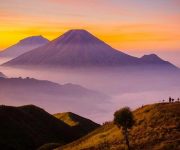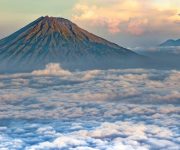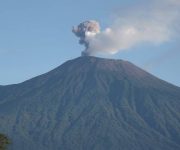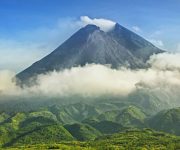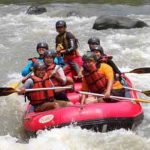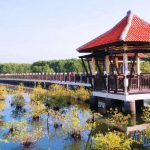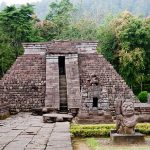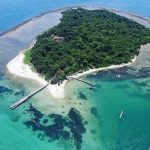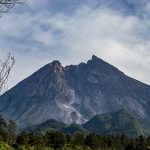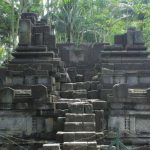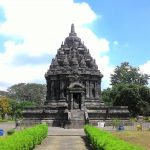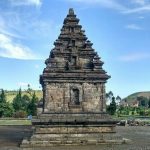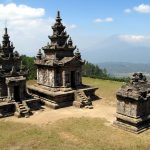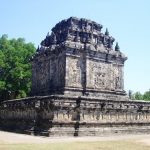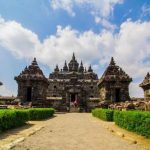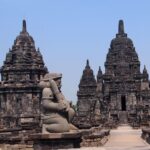Jawa Tengah
Central Java
Central Java
Jateng Gayeng - Central Java in Style
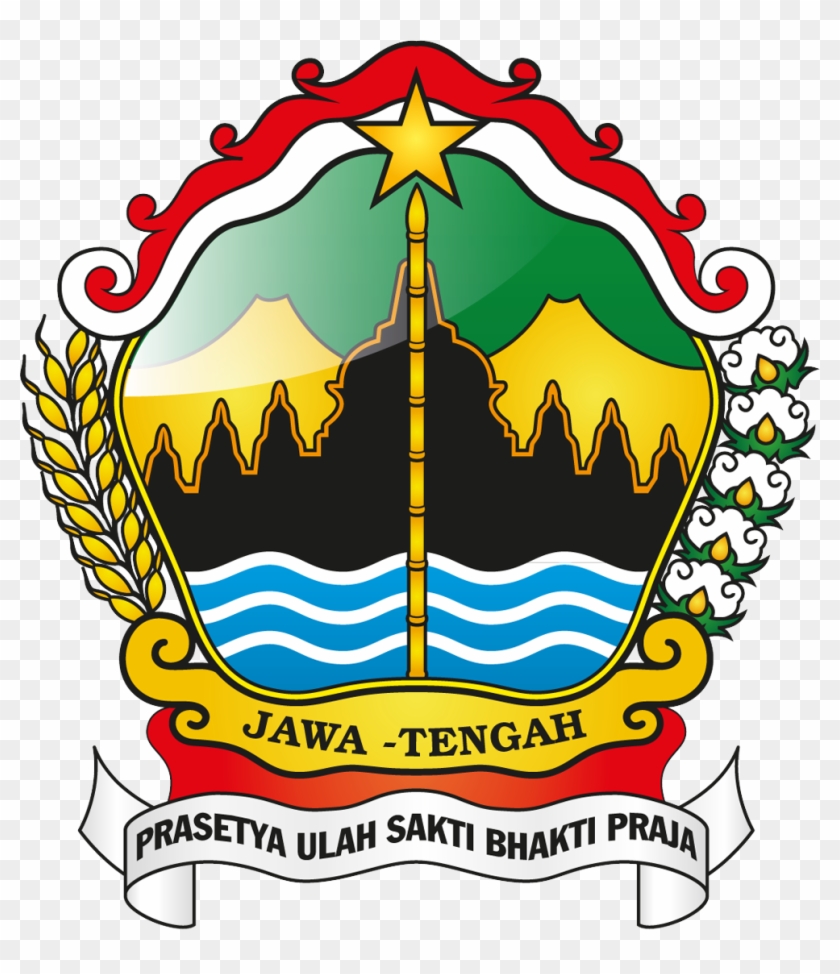 Central Java (abbreviated to Central Java, Hanacaraka: ꦗꦮ ꦠꦼꦔꦃ; Java: Jåwå Tengah, Pegon: جاوا تٓڠه) is a province of Indonesia located in the central part of Java Island. Its capital is Semarang. This province is bordered by West Java Province to the west, the Indian Ocean and Yogyakarta Special Region to the south, East Java to the east, and the Java Sea to the north. Its area is 32,800.69 km², or about 28.94% of the island of Java. Central Java Province also includes Nusakambangan Island in the south (close to the West Java border), as well as the Karimun Jawa Islands in the Java Sea. The population of Central Java based on the Central Bureau of Statistics in 2020 is 34,718,204 people with a density of 1,058.46 people / km².
Central Java (abbreviated to Central Java, Hanacaraka: ꦗꦮ ꦠꦼꦔꦃ; Java: Jåwå Tengah, Pegon: جاوا تٓڠه) is a province of Indonesia located in the central part of Java Island. Its capital is Semarang. This province is bordered by West Java Province to the west, the Indian Ocean and Yogyakarta Special Region to the south, East Java to the east, and the Java Sea to the north. Its area is 32,800.69 km², or about 28.94% of the island of Java. Central Java Province also includes Nusakambangan Island in the south (close to the West Java border), as well as the Karimun Jawa Islands in the Java Sea. The population of Central Java based on the Central Bureau of Statistics in 2020 is 34,718,204 people with a density of 1,058.46 people / km².
Geographically and culturally, the understanding of Central Java also includes the Special Region of Yogyakarta. Central Java is known as the “heart” of Javanese culture. However, in this province there are also other ethnic groups with different cultures from Javanese, such as the Sundanese in the border area with West Java. Apart from that, there are also Chinese-Indonesian, Arab-Indonesian and Indian-Indonesian citizens who are scattered throughout this province.
After the enactment of Decentralisatie Besluit in 1905, gewesten was given autonomy and a regional council was formed. In addition, autonomous gemeente (municipalities) were also formed, namely Pekalongan, Tegal, Semarang, Salatiga, and Magelang.
Since 1930, the province has been designated as an autonomous region which also has a Provincial Council (Provinciale Raad). Provinces consist of several residencies (residentie), which include several districts (regentschap), and are further divided into several kawedanan (districts). Central Java Province consists of 5 residencies, namely Pekalongan, Pati, Semarang, Banyumas, and Kedu.
Following Indonesia’s independence, in 1945 the Government established the autonomous regions of Kasunanan and Mangkunegaran; and made residency. In 1950 through a law stipulated the formation of districts and municipalities in Central Java, which included 29 regencies and 6 municipalities. The enactment of this law has been commemorated as the Anniversary of Central Java Province, which is August 15, 1950.
Geography
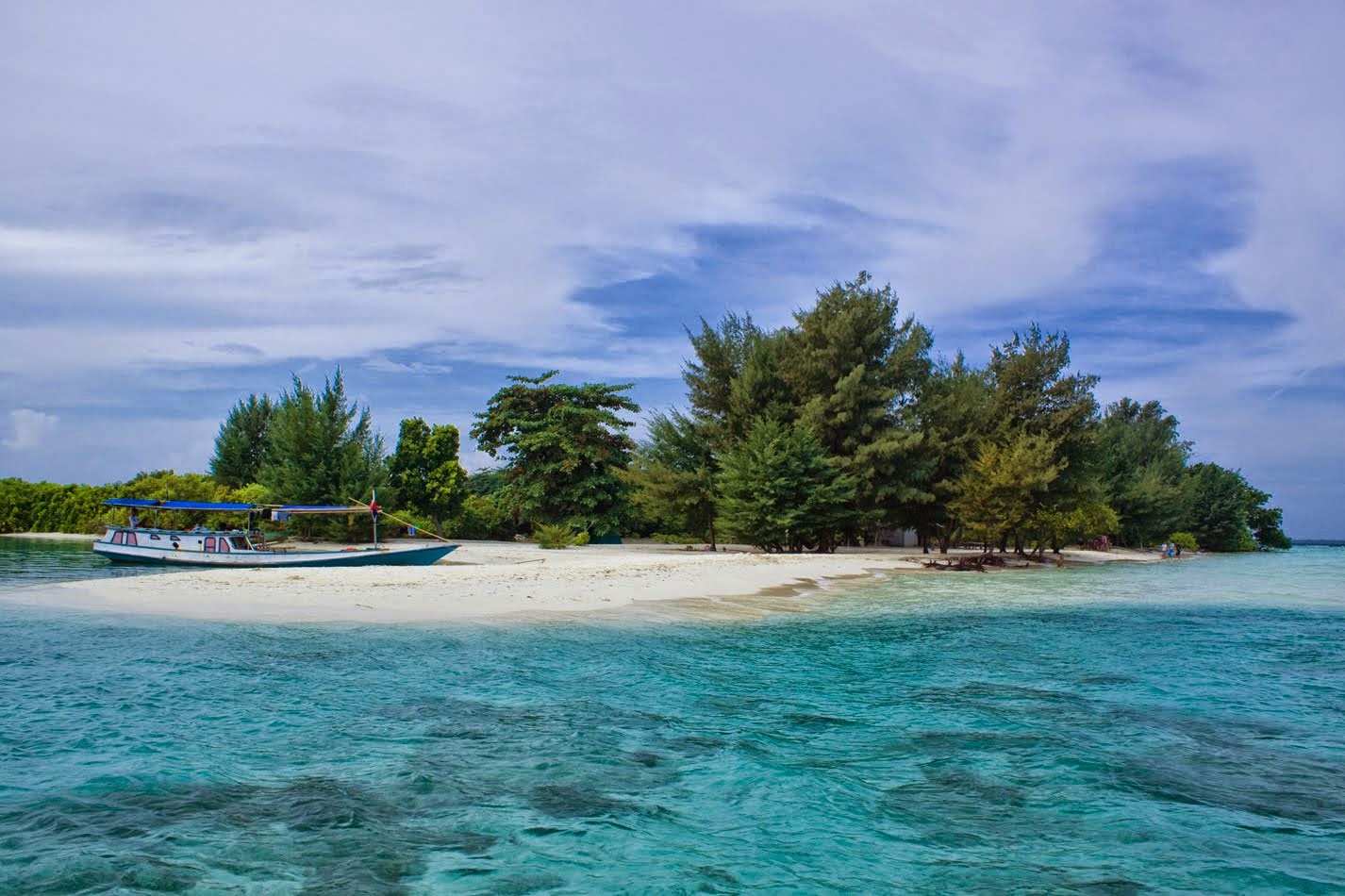 Relief
Relief
According to land slope rates in Central Java, 38% of land has a slope of 0–2%, 31% of land has a slope of 2–15%, 19% of land has a slope of 15–40%, and the remaining 12% of land has a slope of more than 40%.
The northern coast of Central Java has narrow lowlands. In the Brebes area, it is 40 km wide from the beach, and in Semarang it is only 4 km wide. This plain continues with the Semarang-Rembang depression in the east. Mount Muria at the end of the Ice Age (around 10,000 years BC) was a separate island from Java, which eventually merged due to alluvial deposits from the flowing rivers. During the Sultanate of Demak (16th century AD), the city of Demak was located on the seashore and served as a berth for ships. This sedimentation process is still ongoing on the coast of Semarang.
In the south of the area are the North Cretaceous Mountains and the Kendeng Mountains, namely the limestone mountains that stretch from the east of Semarang starting from the southwestern tip of Pati City then east to the borders of Lamongan and Bojonegoro (East Java).
 The main mountain ranges in Central Java are the North Serayu Mountains and South Serayu Mountains. The North Serayu Mountain range forms a mountain chain that connects the Bogor series in West Java with the Kendeng Mountains in the east. The width of this mountain range is about 30-50 km; at the western end is Mount Slamet and the eastern part is the Dieng Plateau with its peaks Mount Prahu and Mount Ungaran.
The main mountain ranges in Central Java are the North Serayu Mountains and South Serayu Mountains. The North Serayu Mountain range forms a mountain chain that connects the Bogor series in West Java with the Kendeng Mountains in the east. The width of this mountain range is about 30-50 km; at the western end is Mount Slamet and the eastern part is the Dieng Plateau with its peaks Mount Prahu and Mount Ungaran.
Between the North Serayu Mountains and the South Serayu Mountains are separated by the Serayu Depression which stretches from Majenang (Cilacap Regency), Purwokerto, to Wonosobo. To the east of this depression there are the Sindoro and Sumbing volcanoes, and to the east again (Magelang and Temanggung areas) are a continuation of the depression that borders Mount Merapi and Mount Merbabu.
 The South Serayu Mountains are part of the South Central Java Basin, located in the southern part of Central Java province. This mandala is a geoanticline that stretches from west to east along 100 kilometers and is divided into two parts separated by the Jatilawang valley, namely the western and eastern parts. The western part is formed by Mount Kabanaran (360 m) and can be described as having the same elevation as the Bandung Depression Zone in West Java or as a new structural element in Central Java. This section is separated from the Bogor Zone by the Majenang Depression.
The South Serayu Mountains are part of the South Central Java Basin, located in the southern part of Central Java province. This mandala is a geoanticline that stretches from west to east along 100 kilometers and is divided into two parts separated by the Jatilawang valley, namely the western and eastern parts. The western part is formed by Mount Kabanaran (360 m) and can be described as having the same elevation as the Bandung Depression Zone in West Java or as a new structural element in Central Java. This section is separated from the Bogor Zone by the Majenang Depression.
The eastern part is built by the Ajibarang anticline (narrow anticline) which is cut off by the Serayu River flow. In the east of Banyumas, the anticline developed into an anticlinorium with a width of up to 30 km in the Lukulo area (south of Banjarnegara-Midangan 1043 m) or often called Tinggi Kebumen (Kebumen High). At the very eastern end of the Mandala, the South Serayu Mountains are formed by the dome of the Kulonprogo Mountains (1022 m), which is located between Purworejo and the Progo River.
The southern coast of Central Java also has narrow lowlands, with a width of 10–25 km. In addition there is the South Gombong Karst Area. Sloping hills stretch parallel to the coast, from Yogyakarta to Cilacap. To the east of Yogyakarta is a limestone mountain area that stretches to the south coast of East Java.
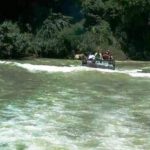
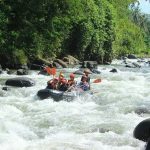

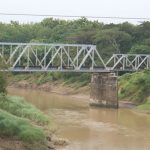
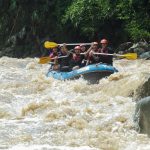
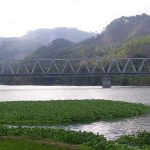

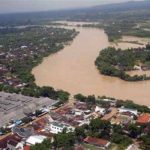













 Hydrology
Hydrology
The rivers that empty into the Java Sea include Bengawan Silugonggo (Kali Juwana), Kali Pemali, Kali Comal, and Kali Bodri. Meanwhile, the rivers that empties into the Indian Ocean include Serayu River, Bogowonto River, Luk Ulo River and Progo River. Bengawan Solo is the longest river in Java Island (572 km); having springs in the Sewu Mountains (Wonogiri Regency), this river flows north, crosses Surakarta City, and finally heads to East Java and empties into the Gresik area (near Surabaya).
Among the main reservoirs (lakes) in Central Java are Lake Mount Rowo (Pati Regency), Gajahmungkur Reservoir (Wonogiri Regency), Kedungombo Reservoir (Boyolali, Grobogan and Sragen Regencies), Rawa Pening Lake (Semarang Regency), Cacaban Reservoir (Tegal Regency), Malahayu Reservoir (Brebes Regency), Wadaslintang Reservoir (border of Kebumen Regency and Wonosobo Regency), Gembong Reservoir (Pati Regency), Sempor Reservoir (Kebumen Regency) and Mrica Reservoir (Banjarnegara Regency).
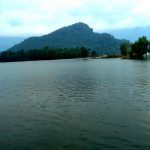
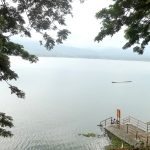
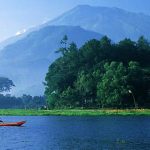
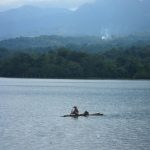
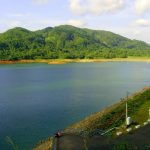

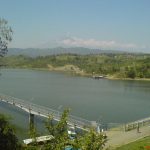
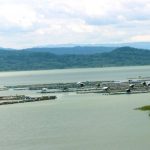

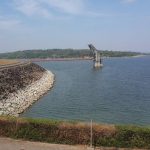












 Vulcano
Vulcano
There are 5 active volcanoes in Central Java, namely: Mount Merapi (in Magelang – Boyolali – Klaten), Mount Slamet (in Pemalang), Mount Sindoro (in Temanggung-Wonosobo), Mount Sumbing (in Temanggung – Wonosobo – Magelang), and Mount Prau, in Dieng Plateau (in Banjarnegara).
Soil condition
According to the Bogor Soil Research Institute in 1969, the soil types in the Central Java region were dominated by latosol, alluvial, and grumusol soils; so that the stretch of land in this province includes land that has relatively fertile levels of fertility.
Climate
Central Java has a tropical climate, with an average annual rainfall of 2,000 meters, and an average temperature of 21-32oC. Areas with high rainfall are mainly found in the western part of Nusakambangan, and along the North Serayu Mountains. Areas with low rainfall and frequent drought in the dry season are in the Blora and surrounding areas and in the southern part of Wonogiri Regency.
Demographics
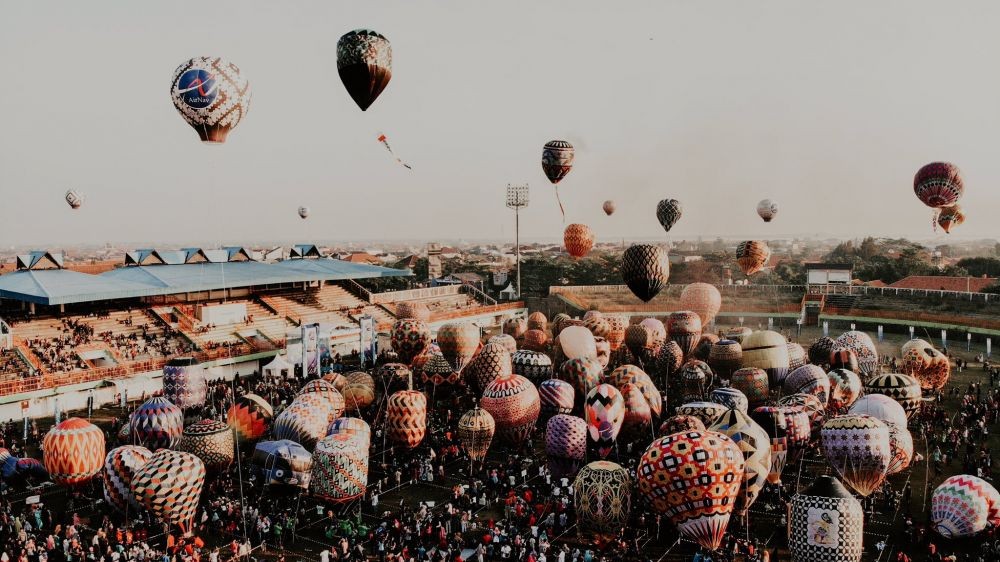 Population
Population
The total population of Central Java Province based on the 2015 census is 35,557,249 people. The districts / cities with the largest population are Brebes Regency (2,342 million people), Cilacap Regency (2,227 million people), and Banyumas Regency (1,953 million people).
The distribution of the population is generally concentrated in city centers, both districts and cities. Dense residential areas are located in the Semarang Raya area (including Ungaran and parts of Demak and Kendal Regencies), the Salatiga Raya area (including the Ambarawa, Bringin, Kopeng, Tengaran and Suruh areas), Solo Raya (including parts of the Karanganyar, Sukoharjo Regency, and Boyolali), as well as Tegal-Brebes-Slawi.
The population growth of Central Java Province is 0.67% per year. The highest population growth was in Demak Regency (1.45% per year), while the lowest was Pekalongan City (0.09% per year). Of this population, 47% are in the labor force. The most livelihoods are in the agricultural sector (42.34%), followed by trade (20.91%), industry (15.71%), and services (10.98%).
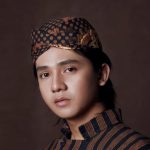


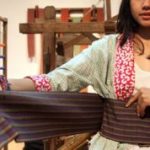
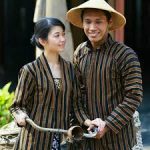
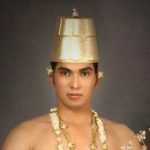
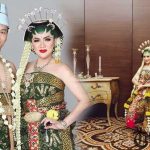
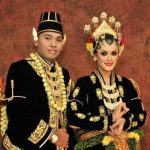
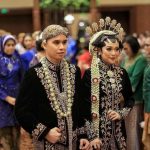
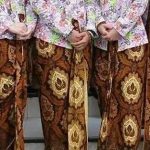












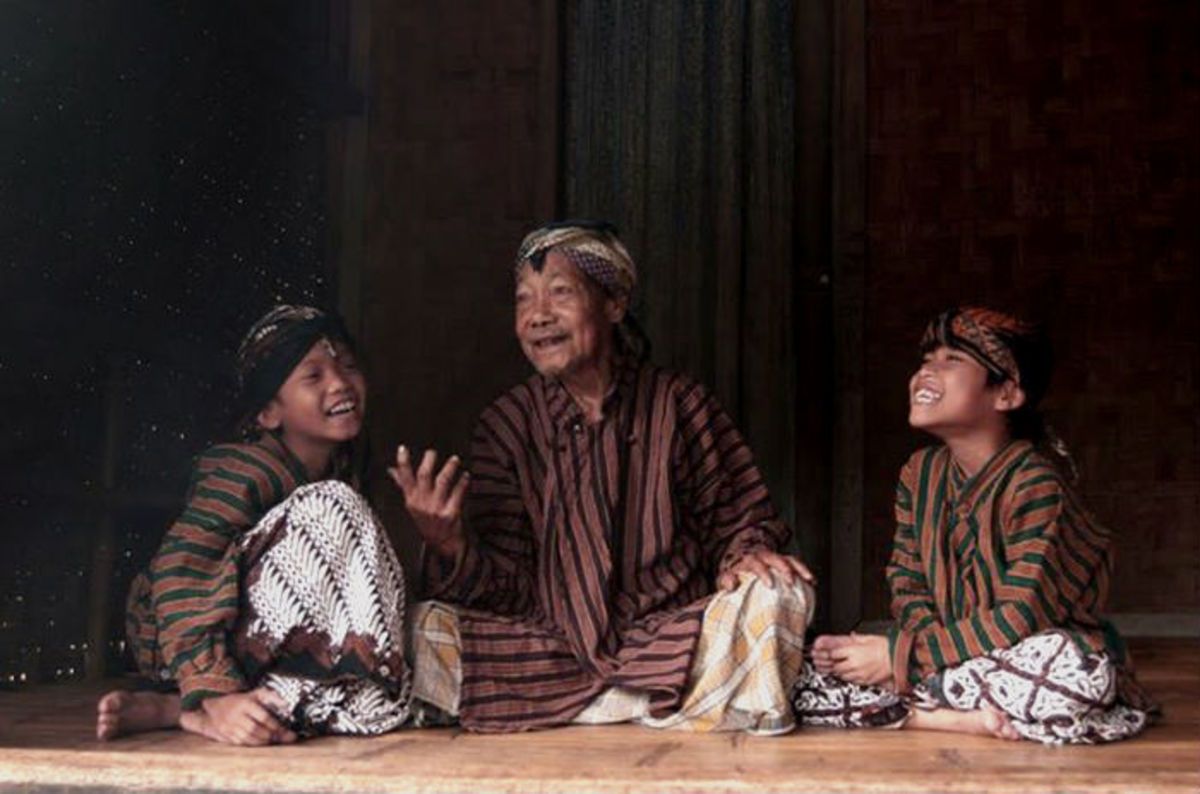 Tribe
Tribe
The majority of Central Java’s population are Javanese. Central Java is known as the center of Javanese culture, where in the cities of Surakarta and Yogyakarta there is the center of the Javanese royal palace which still stands today.
A significant minority ethnic group is Chinese, especially in urban areas although it is also found in rural areas. In general, they are engaged in trade and services. The Chinese community has mingled with Javanese tribes, and many of them speak Javanese with a thick accent everyday. We can feel the strong influence when we are in the city of Semarang and the city of Lasem which is at the northeastern tip of Central Java, even Lasem is nicknamed Le Petit Chinois or the City of Small China.
In addition, in several major cities in Central Java, Arab-Indonesian communities were also found. Similar to the Chinese community, they are usually engaged in trade and services.
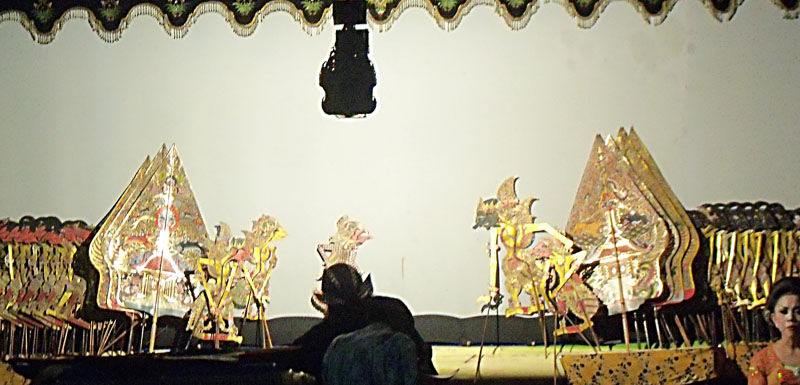 In the border area with West Java there are also Sundanese people who are full of Sundanese culture, especially in the areas of Cilacap, Brebes, and Banyumas. In the interior of Blora (the border with East Java province) there is an isolated Samin community, whose cases are almost the same as those of the Kanekes in Banten.
In the border area with West Java there are also Sundanese people who are full of Sundanese culture, especially in the areas of Cilacap, Brebes, and Banyumas. In the interior of Blora (the border with East Java province) there is an isolated Samin community, whose cases are almost the same as those of the Kanekes in Banten.
Language
The official language of government agencies in Central Java is Indonesian. Until 2019, the Language Agency noted that there were 2 regional languages in Central Java. The two languages are Javanese and Sundanese.
Most people use Javanese as their everyday language. The Solo-Jogja or Mataram dialect Javanese is considered standard Javanese. In addition, there are a number of dialects of the Javanese language, but in general it consists of two, namely kulonan and timuran. Kulonan is spoken in the western part of Central Java, consisting of the Banyumasan dialect and the Tegal dialect; This dialect has a pronunciation that is quite different from Standard Javanese. Meanwhile, Timuran is spoken in the eastern part of Central Java, including the Mataram dialect (Solo-Jogja), the Semarang dialect, and the Pati dialect. Between the borders of the two dialects, Javanese is spoken with a mixture of the two dialects; these areas include Pekalongan and Kedu.
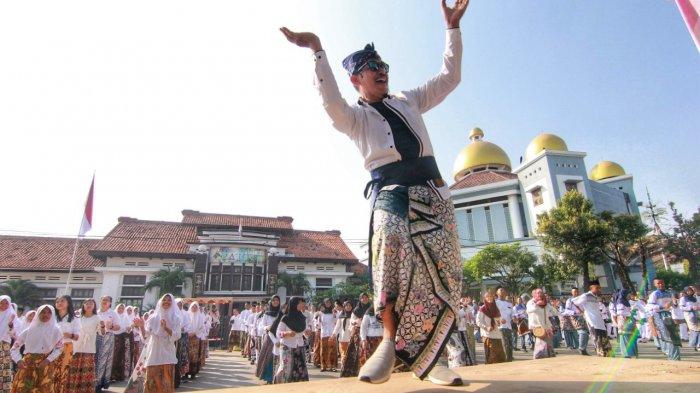 In areas with Sundanese population, namely in the southern part of Brebes district, and the northern Cilacap district around the Dayeuhluhur sub-district, the Sundanese still use Sundanese in their daily life.
In areas with Sundanese population, namely in the southern part of Brebes district, and the northern Cilacap district around the Dayeuhluhur sub-district, the Sundanese still use Sundanese in their daily life.
Religion
Most of the population of Central Java is Muslim, generally categorized into two groups, namely the Santri and Abangan. The santri practice religious teachings in accordance with Islamic law, while the abangans, although adhering to Islam, are still influenced by the strong Kejawen in practice.
Other religions followed are Christianity (Protestant and Catholic), Hinduism, Buddhism, Confucianism, and other faiths. Central Java Province is the center of the spread of Christianity and Catholicism in Java. For example, in the cities of Semarang, Magelang, Surakarta and Salatiga, which have a Christian population of around 15% to 25%.
Culture
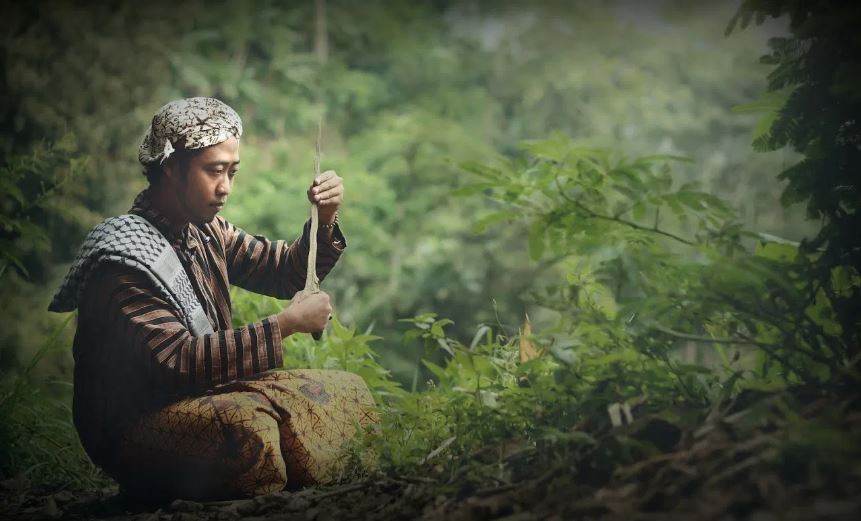 Central Java is considered to be the heart of the Javanese culture. The ideal conduct and moral of the courts (such as politeness, nobility and grace) has a tremendous influence on the people.
Central Java is considered to be the heart of the Javanese culture. The ideal conduct and moral of the courts (such as politeness, nobility and grace) has a tremendous influence on the people.
They are known as soft-spoken, very polite, extremely class-conscious, apathetic, down-to-earth, etc. These stereotypes form what most non-Javanese see as the “Javanese Culture”, when in fact, not all Javanese behave in such manner as most Javanese are far from the court culture.
Javanese Culture
The Javanese cultural area can be divided into three distinct main regions: Western, Central, and Eastern Javanese culture or in their Javanese names as Ngapak, Kejawèn and Arèk. The boundaries of these cultural regions coincide with the isoglosses of the Javanese dialects. Cultural areas west of Dieng Plateau and Pekalongan Regency are considered Ngapak whereas the border of the eastern cultural areas or Arèk lies in East Java. Consequently, culturally, Central Java consists of two cultures, while the Central Javanese Culture proper is not entirely confined to Central Java.
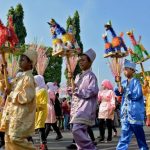
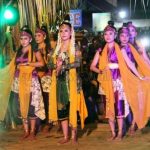
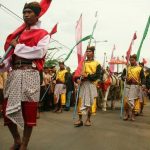
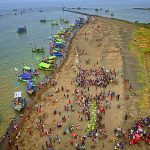
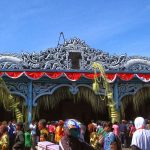
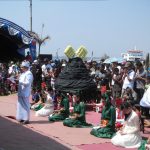
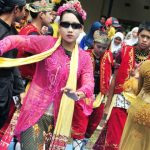
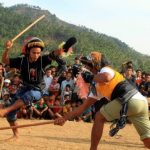
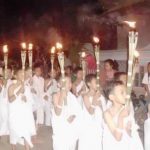












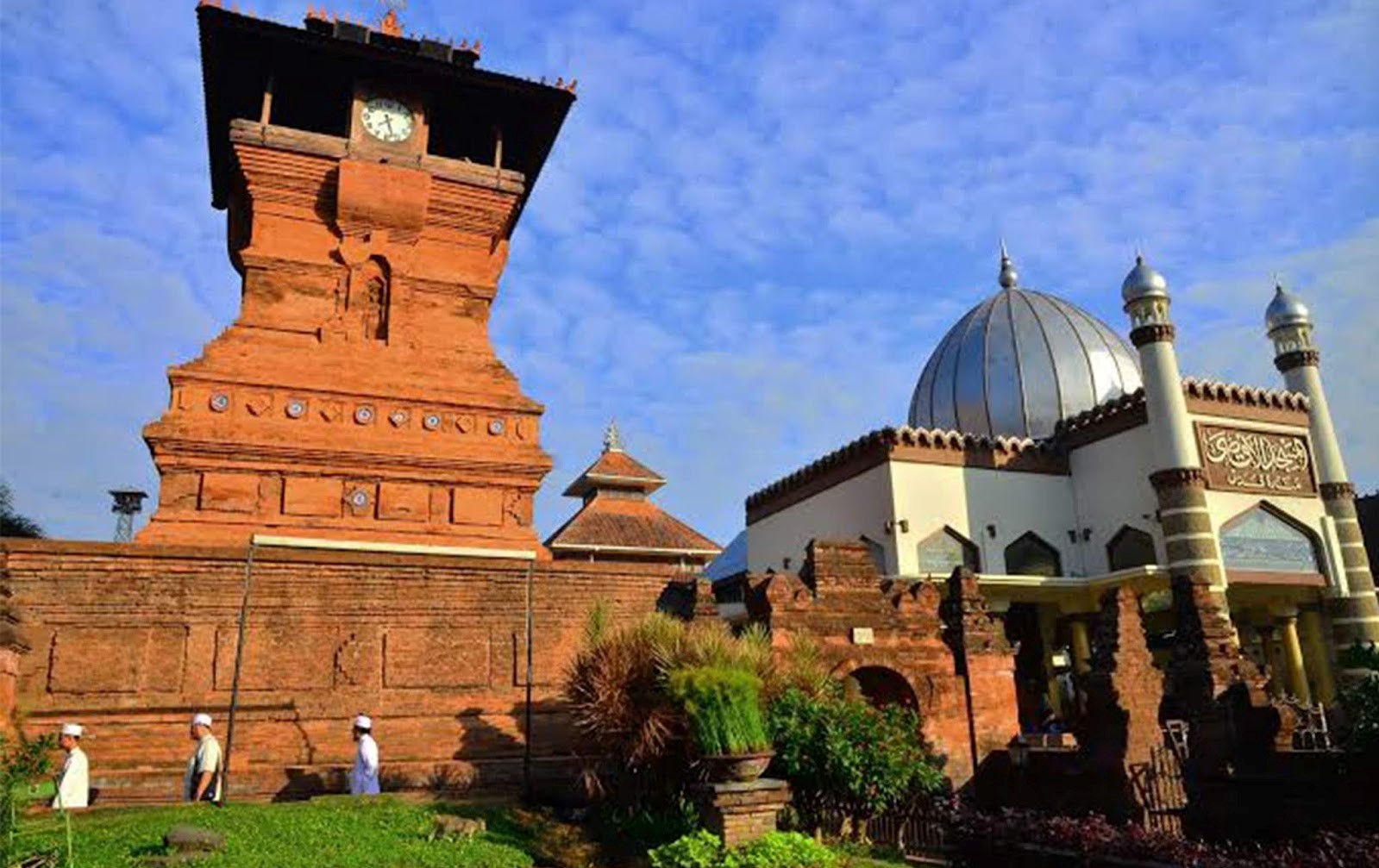 Architecture
Architecture
The architecture of Central Java is characterised by the juxtaposition of the old and the new and a wide variety of architectural styles, the legacy of many successive influences from the Indian subcontinent, the Middle East, China, and Europe. In particular, northern coastal cities such as Semarang, Tegal, and Pekalongan can boast European colonial architecture.
The European and Chinese influence can be seen in Semarang’s temple of Sam Poo Kong dedicated to Zheng He and the Domed Church built in 1753. The latter is the second-oldest church in Java and the oldest in Central Java. In the former capital of Surakarta, there are also several European architectures.
Central Java also has some notable religious buildings. The Borobudur and the Prambanan temple complexes are among the largest Buddhist and Hindu structures in the world. In general, a characteristic Javanese mosque does not have a dome as its roof but a Meru-like roof which is reminiscent of a Hindu or Buddhist temple. The tower of the famous Mosque of Kudus resembles a Hindu-Javanese or Balinese temple more than a traditional Middle Eastern mosque.
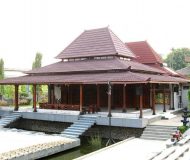
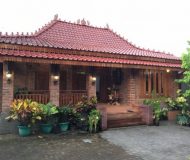
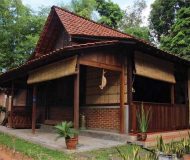
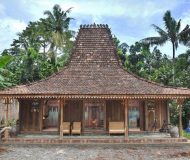
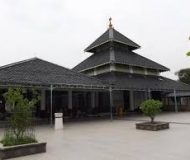










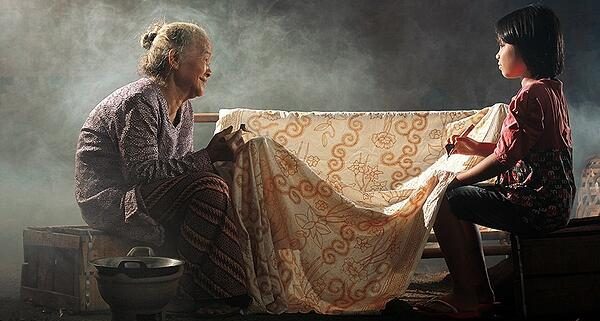 Batik
Batik
Central Java is famous and well known for its exquisite batik, a generic wax-resist dyeing technique used on textiles. There are different styles of batik motifs. A centre of batik production is in Pekalongan.
Other centres include Surakarta and Yogyakarta. Batik in Pekalongan style, which represent gaya pesisir (or coastal style), is different from the one in Surakarta and Yogyakarta that represent batik from the heartland of Java (gaya kejawèn).
Dance
One can even see the court influences in the art forms. The dances of the courts of Java are usually slow and graceful with no excessive gestures. The people followed this approach, and as a result, slow-paced and graceful movements can even be found in folk dances throughout Central Java, though with some exceptions. One can enjoy the beauty of Central Javanese dances in “Kamajaya-Kamaratih” or “Karonsih”, usually performed in a traditional Javanese wedding.
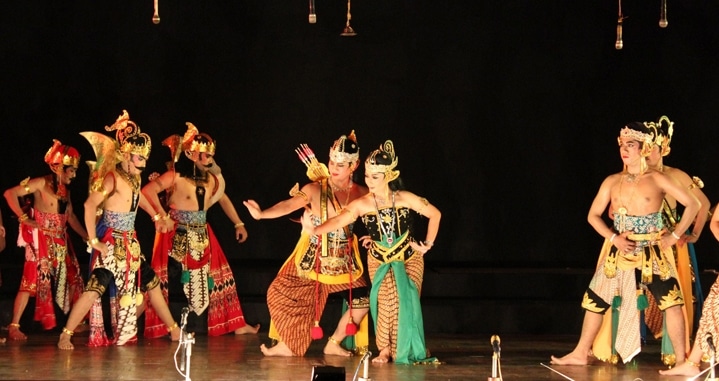 Theatre
Theatre
There are several kinds of Central Javanese theatre and performing arts. The most well-known is the Javanese wayang theatre, which has several types. These are wayang kulit, wayang klitik, wayang bèbèr, wayang golèk, and wayang wong.
Wayang kulit are shadow puppets theatre with leather puppets. The stories are loosely based on Mahabharata and Ramayana cycles. Wayang klitik are puppets theatre with flat wooden puppets. The stories are based on Panji (king) stories. Panji was a native Javanese princes who embarked a ‘journeys of desire’. Wayang bèbèr is scroll theatre, and it involves “performing” scenes of a story elaborately drawn and painted on rolled sheets.
Wayang golèk consists of three-dimensional wooden puppets. The narrative can be based on anything, but usually are drawn from Islamic heroic ones. Finally, wayang wong is wayang theatre involving live figures, actors who are performing a play. The narrative, however, must be based on Mahabharata or Ramayana.
In addition to wayang, there is another form of theatre called ketoprak. It is a staged play by actors accompanied by Javanese gamelan. The narrative is free but cannot be based on Mahabharata or Ramayana.
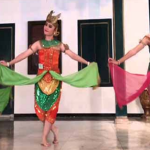
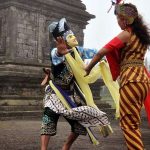
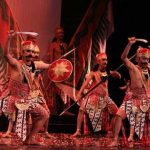


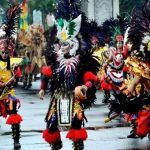
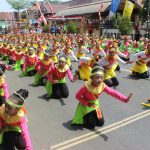
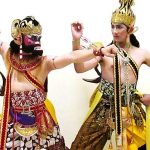
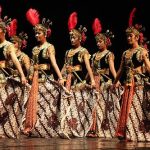
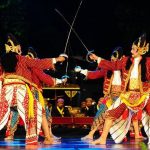
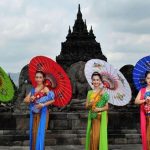
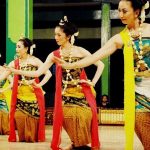
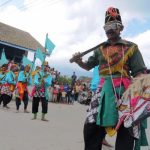












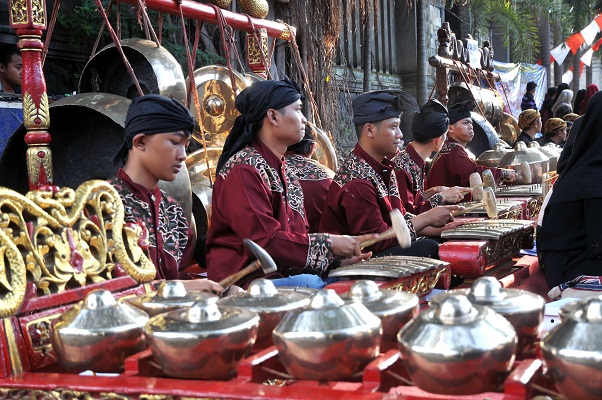 Music
Music
Central Javanese music is almost synonymous with gamelan. It is a musical ensemble typically featuring a variety of instruments such as metallophones, xylophones, drums, gongs, bamboo flutes, bowed and plucked strings. Vocalists may also be included. The term refers more to the set of instruments than the players of those instruments. A gamelan as a set of instruments is a distinct entity, built and tuned to stay together. Instruments from different gamelan are not interchangeable. However, gamelan is not typically Central Javanese as it is also known elsewhere.
Contemporary Javanese pop music is called campursari. It is a fusion between gamelan and Western instruments, much like kroncong. Usually, the lyrics are in Javanese, though not always. One notable singer is Didi Kempot, born in Sragen, north of Surakarta. He mostly sings in Javanese.
Literature
It can be argued that Javanese literature started in Central Java. The oldest-known literary work in the Javanese language is the inscription of Sivagrha from Kedu Plain. This inscription, which is from 856 AD, is written as a kakawin or Javanese poetry with Indian metres. The oldest of narrative poems, Kakawin Ramayana, which tells the well-known story of Ramayana, is believed to have come from Central Java. It can be safely assumed that this kakawin were written in the central Java region in the 9th century.
 After the shift of Javanese power to eastern Java, it had been quiet from Central Java for several centuries concerning Javanese literature until the 16th century. At this time, the centre of power was shifted back to Central Java. The oldest work written in modern Javanese language concerning Islam is the so-called “Book of Bonang” or also “The Admonitions of Seh Bari”. This work is extant in just one manuscript, now kept in the University of Leiden as codex Orientalis 1928.
After the shift of Javanese power to eastern Java, it had been quiet from Central Java for several centuries concerning Javanese literature until the 16th century. At this time, the centre of power was shifted back to Central Java. The oldest work written in modern Javanese language concerning Islam is the so-called “Book of Bonang” or also “The Admonitions of Seh Bari”. This work is extant in just one manuscript, now kept in the University of Leiden as codex Orientalis 1928.
It is assumed that this manuscript originates from Tuban, in eastern Java and was taken to the Netherlands after 1598. However, this work is attributed to Sunan Bonang, one of the nine Javanese saints who spread Islam in Java and Sunan Bonang came from Bonang, a place in Demak Regency, Central Java. It can be argued that this work marked the beginning of Islamic literature in the region.
However, the pinnacle of Central Javanese literature was created at the courts of the kings of Mataram in Kartasura and later in Surakarta and Yogyakarta that are mostly attributed to the Yasadipura family. The most famous member of this family is Rangga Warsita who lived in the 19th century. He is the best-known of all Javanese writers and also one of the most prolific. He is also known as bujangga panutup or “the last court poet”.
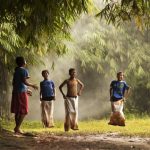
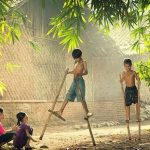
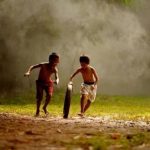
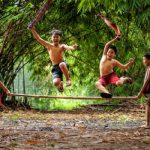
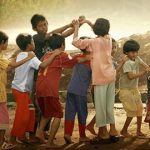
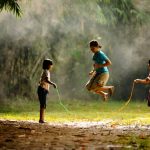












Cuisine
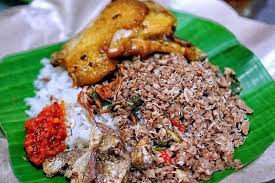 Rice is the staple food of Central Java. In addition to rice, dried cassava, known locally as gaplèk, also serve as a staple food. Javanese food tends to taste sweet. Cooked and stewed vegetables, usually in coconut milk (santen in Javanese) are prevalent. Raw vegetable, which is popular in West Java, is less prevalent in Central Java.
Rice is the staple food of Central Java. In addition to rice, dried cassava, known locally as gaplèk, also serve as a staple food. Javanese food tends to taste sweet. Cooked and stewed vegetables, usually in coconut milk (santen in Javanese) are prevalent. Raw vegetable, which is popular in West Java, is less prevalent in Central Java.
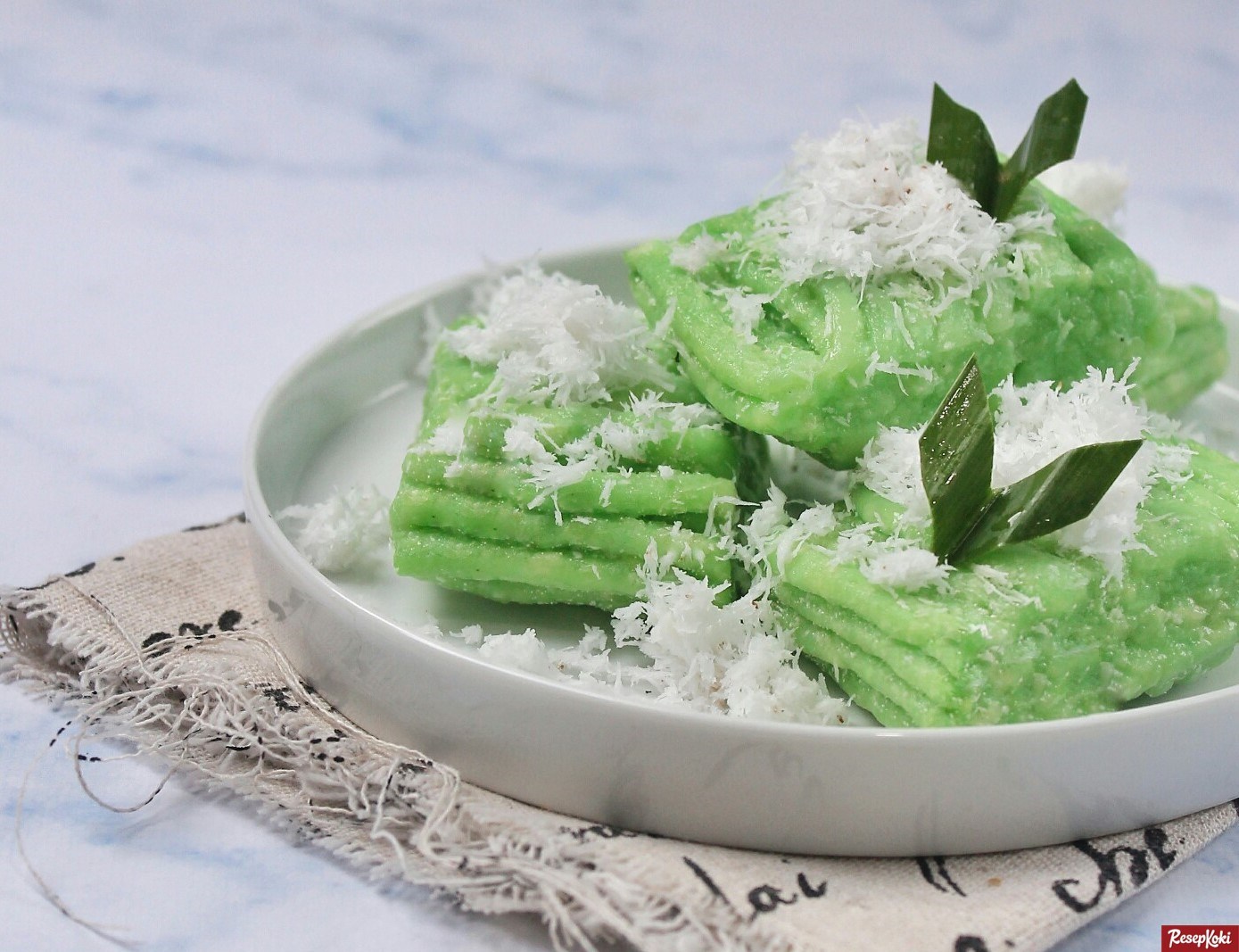 Saltwater fish, both fresh and dried are common, especially among coastal areas. Freshwater fish is not popular in Central Java, unlike in West Java, except perhaps for catfish known locally as lélé. It is usually fried and served with chilli condiment (sambal) and raw vegetables.
Saltwater fish, both fresh and dried are common, especially among coastal areas. Freshwater fish is not popular in Central Java, unlike in West Java, except perhaps for catfish known locally as lélé. It is usually fried and served with chilli condiment (sambal) and raw vegetables.
Chicken, mutton and beef are common meat. Certain parts of the population also eat dog meat, known by its euphemism daging jamu (literally “traditional medicine meat”).
Tofu and tempe serve as the standard replacement to fish and meat. Famous dishes in Central Java include gudeg (sweet stew of jackfruit) and sayur lodeh (vegetables cooked in coconut milk). Besides the aforementioned tofu, there is a strong Chinese influence in numerous dishes. Some examples of Sino-Javanese food include noodles, bakso (meatballs), lumpia, soto etc. The widespread use of sweet soybeans sauce (kecap manis) in the Javanese cuisine can also be attributed to the Chinese influence.
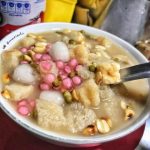
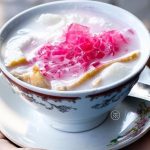

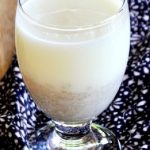
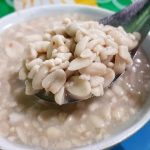
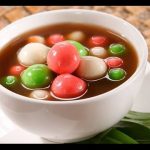

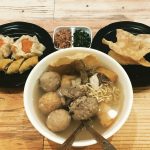
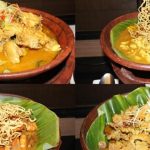
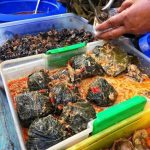
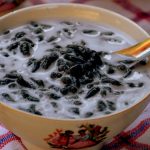
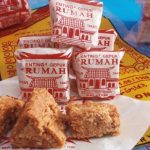
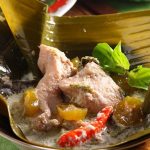
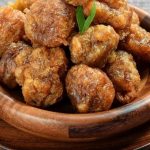
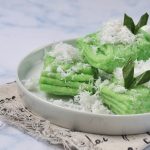
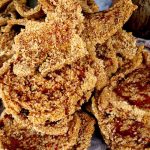
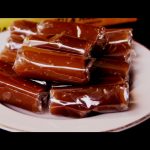
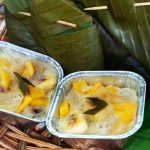

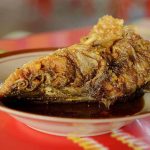
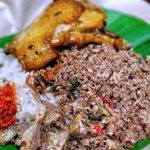
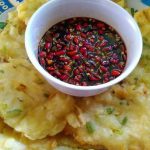
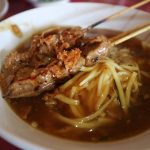
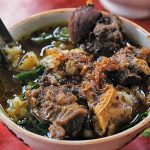




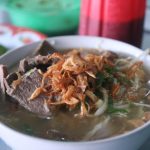
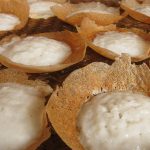
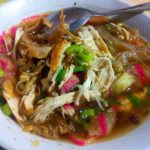
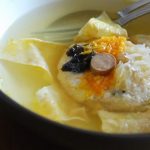


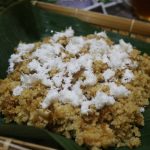
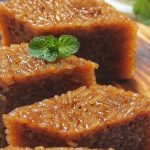
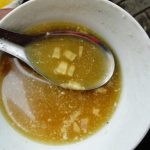
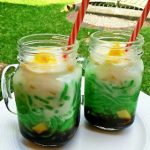
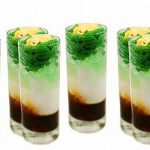













Kabupaten & Kota
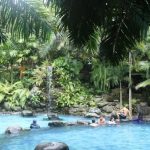
Semarang
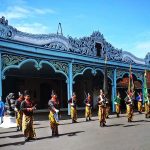
Surakarta
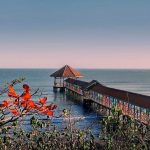
Tegal
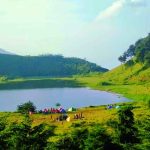
Banjarnegara
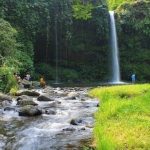
Banyumas

Batang
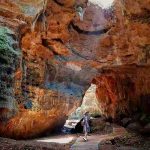
Blora

Boyolali
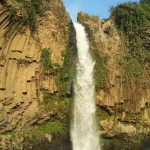
Brebes

Cilacap
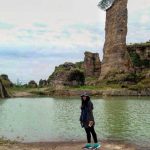
Demak
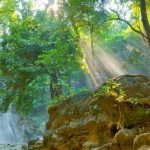
Grorbogan
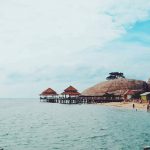
Jepara
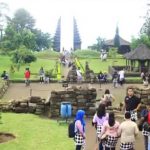
Karanganyar
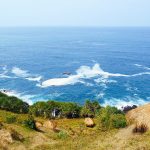
Kebumen
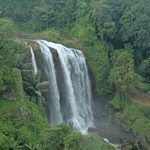
Kendal
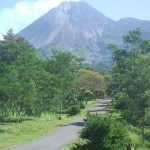
Klaten
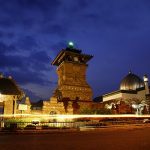
Kudus

Magelang
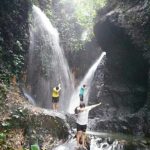
Pati
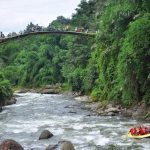
Pekalongan
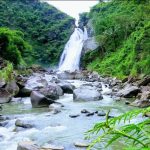
Pemalang

Purbalingga

Purworejo
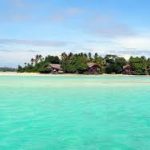
Rembang
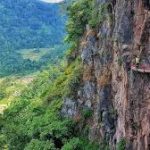
Semarang
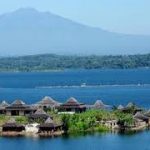
Sragen
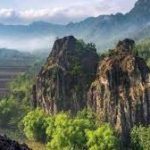
Sukoharjo
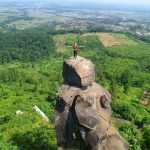
Tegal
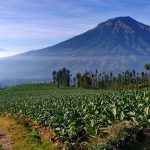
Temanggung
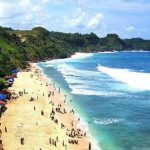
Wonogiri
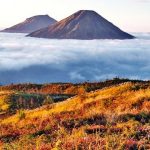
Wonosobo

Semarang

Surakarta

Tegal

Banjarnegara

Banyumas

Batang

Blora

Boyolali

Brebes
Tourism
 Central Java has many very interesting tourist objects. The city of Semarang, for example, has a number of ancient buildings. Attractions in the city include Puri Maerokoco (Central Java Mini Park), Ranggawarsita Central Java Museum and the Indonesian Record Museum (MURI). There are many natural attractions in Central Java such as Grenjengan SeWu Waterfall, Wareh Cave, Pancur Cave on the North Coast of Java Pati.
Central Java has many very interesting tourist objects. The city of Semarang, for example, has a number of ancient buildings. Attractions in the city include Puri Maerokoco (Central Java Mini Park), Ranggawarsita Central Java Museum and the Indonesian Record Museum (MURI). There are many natural attractions in Central Java such as Grenjengan SeWu Waterfall, Wareh Cave, Pancur Cave on the North Coast of Java Pati.
Jepara Regency has a number of ancient buildings, namely: Wind Temple, Mantingan Mosque, Hian Thian Siang Tee Temple, Portuguese Fort, VOC Fort, World Peace Gong Museum, R.A Kartini Museum.
One of the pride of this province is the Borobudur Temple, which is the largest Buddhist monument in the world which was built in the 9th century, located in Magelang Regency. Mendut and Pawon Temples are also located in the same area as Borobudur Temple.
Prambanan Temple in Klaten is the largest Hindu temple complex in Indonesia. In the Dieng area, there are groups of Hindu temples, which are thought to have been built before the Ancient Mataram era. The Gedong Songo temple complex is located on the slopes of Mount Ungaran, Semarang Regency. In the Keling sub-district, in the village of Tempur, there is Candi Angin.
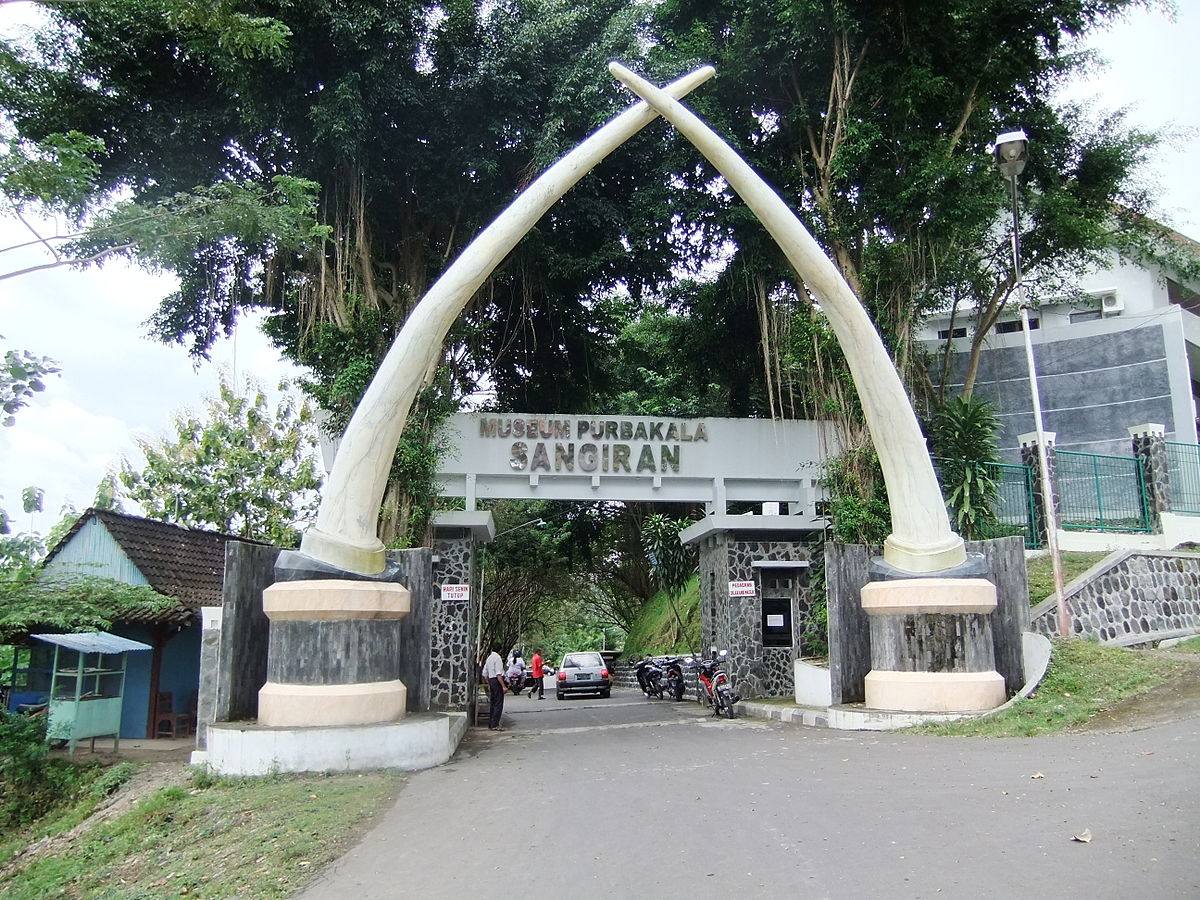 Surakarta is seen as one of the centers of Javanese culture, where in this city there are the Kasunanan Palace and the Mangkunegaran Temple. Interesting attractions in the east of the city are several waterfall tours such as Jumog Waterfall, and the famous Grojogan Sewu Waterfall. There are also temples from Majapahit, the three of which are located in Karanganyar Regency; and the Sangiran Fossil Museum which is located on Jalan Solo-Purwodadi, to be precise, Kalijambe District, Sragen Regency. In the southern part of the Surakarta region, Wonogiri Regency, there are several water attractions, such as the Gajah Mungkur Reservoir, as well as Nampu Beach and Sembukan Beach with its stretch of cliffs and white sand.
Surakarta is seen as one of the centers of Javanese culture, where in this city there are the Kasunanan Palace and the Mangkunegaran Temple. Interesting attractions in the east of the city are several waterfall tours such as Jumog Waterfall, and the famous Grojogan Sewu Waterfall. There are also temples from Majapahit, the three of which are located in Karanganyar Regency; and the Sangiran Fossil Museum which is located on Jalan Solo-Purwodadi, to be precise, Kalijambe District, Sragen Regency. In the southern part of the Surakarta region, Wonogiri Regency, there are several water attractions, such as the Gajah Mungkur Reservoir, as well as Nampu Beach and Sembukan Beach with its stretch of cliffs and white sand.
The southern part of Central Java also has a number of interesting tourist objects, including Jatijajar Cave, Petruk Cave Pancur, Menganti Beach, Van der Wijk Fortress, Suwuk Beach, Sempor Reservoir, Sudimoro Waterfall, Sawangan Waterfall, West Goa, Logending Mangrove Forest, Geowisata Karangsambung, Krakal Hot Springs and Karangbolong Beach in Kebumen Regency, and Baturraden in Banyumas Regency. In the north, there are Guci Tourism Objects on the slopes of Mount Slamet, Tegal Regency; and the city of Pekalongan, known as the ‘city of batik’.
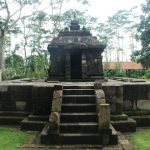



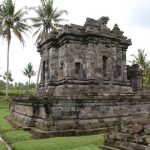
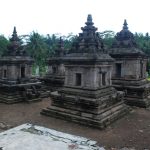
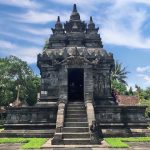

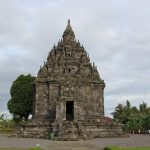
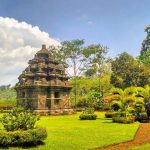




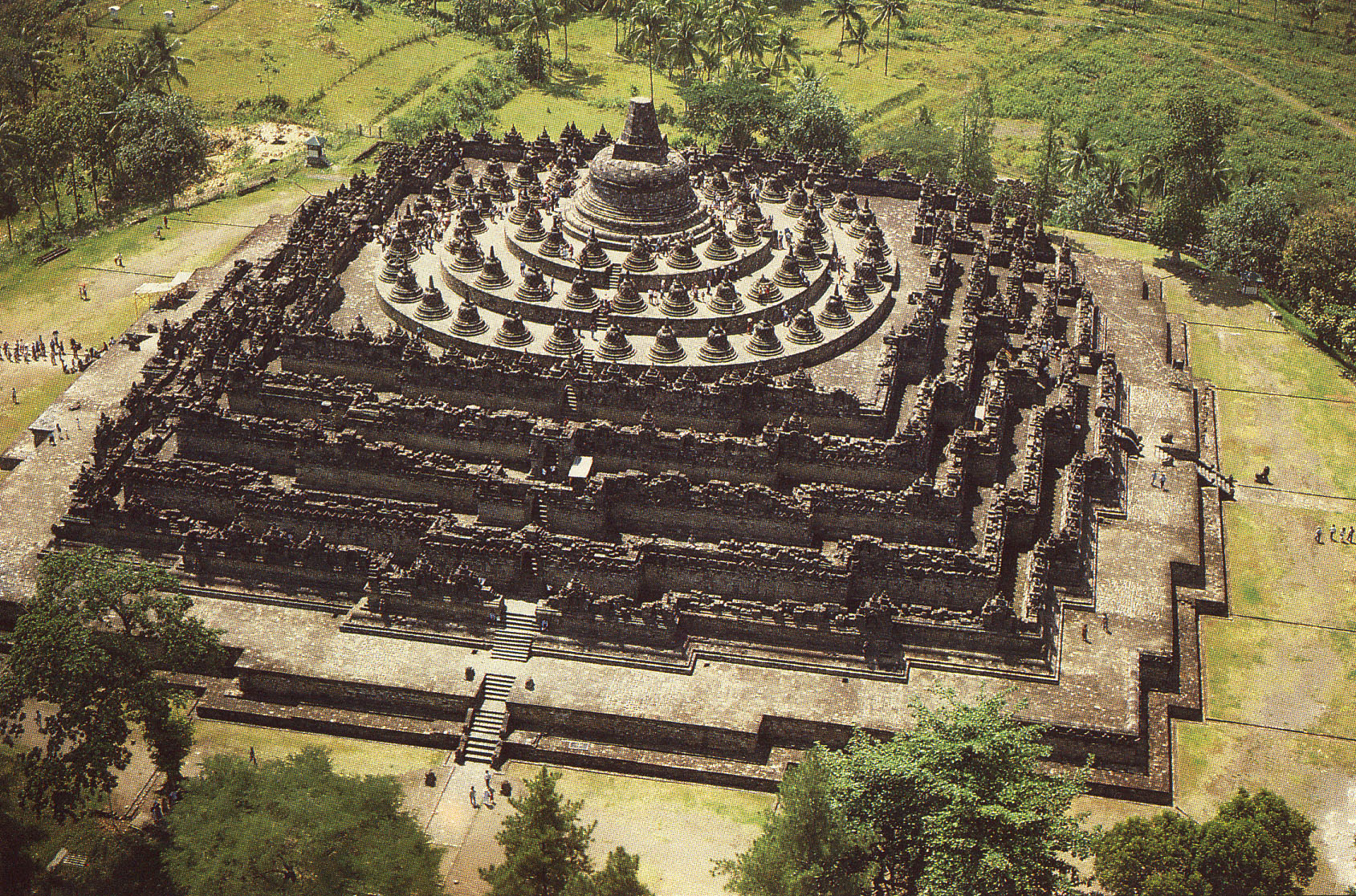 The eastern pantura area has a lot of religious tourism. The Great Mosque of Demak, which was founded in the 16th century, is an artistic building with a blend of Islamic and Hindu architecture. Demak is the first Islamic kingdom on the island of Java. The eastern pantura area has 5 tombs of sanga guardians, namely Sunan Ngerang, Sunan Prawoto, Sunan Makhdum in Pati, Sunan Kalijaga in Demak, Sunan Kudus, Sunan Muria in Kudus Regency.
The eastern pantura area has a lot of religious tourism. The Great Mosque of Demak, which was founded in the 16th century, is an artistic building with a blend of Islamic and Hindu architecture. Demak is the first Islamic kingdom on the island of Java. The eastern pantura area has 5 tombs of sanga guardians, namely Sunan Ngerang, Sunan Prawoto, Sunan Makhdum in Pati, Sunan Kalijaga in Demak, Sunan Kudus, Sunan Muria in Kudus Regency.
Some of the tourist destinations in Pati include the Tomb and Heritage Mosque of Sheikh Ahmad Mutamakkin Kajen Margoyoso Pati, Statues and Tombs of Raden Adipati Tombronegoro, Syekh Ronggo Kusumo Ngemplak, Sheikh Hendro Kusumo Sukoharjo, tomb of Syech Jangkung (Saridin), Goa Wareh, Gua Pancur, Gunungrowo Reservoir, Seloromo Reservoir, ViHara SaddaGHiri Jrahi, Juwana Water Park Fantasy (JWF), Jolong Coffee Plantation Agro Tourism and Majapahit Gate.
Meanwhile in Rembang Regency, there are pilgrimage, nature, and historical tours, such as in Pasujudan Sunan Bonang and Sunan Bonang Mosque in Bonang village, Lasem, Tumenggung Wilwatikta Mpu Santibadra grave which is famous for writing the book Pustaka Sabda Badra Santi, the tomb of the national hero RA. Kartini, Vihara Ratanavana Arama Lasem, Cu An Kiong Temple, explore the old town of Lasem, Plawangan archaeological site and Terjan beach tourism on Tasikharjo beach, Karangjahe beach, Punjulharjo, Gedong / Caruban beach, Binangun beach, Banggi mangrove forest, Dampo Awang Beach and tours nature of climbing Mount Lasem.

